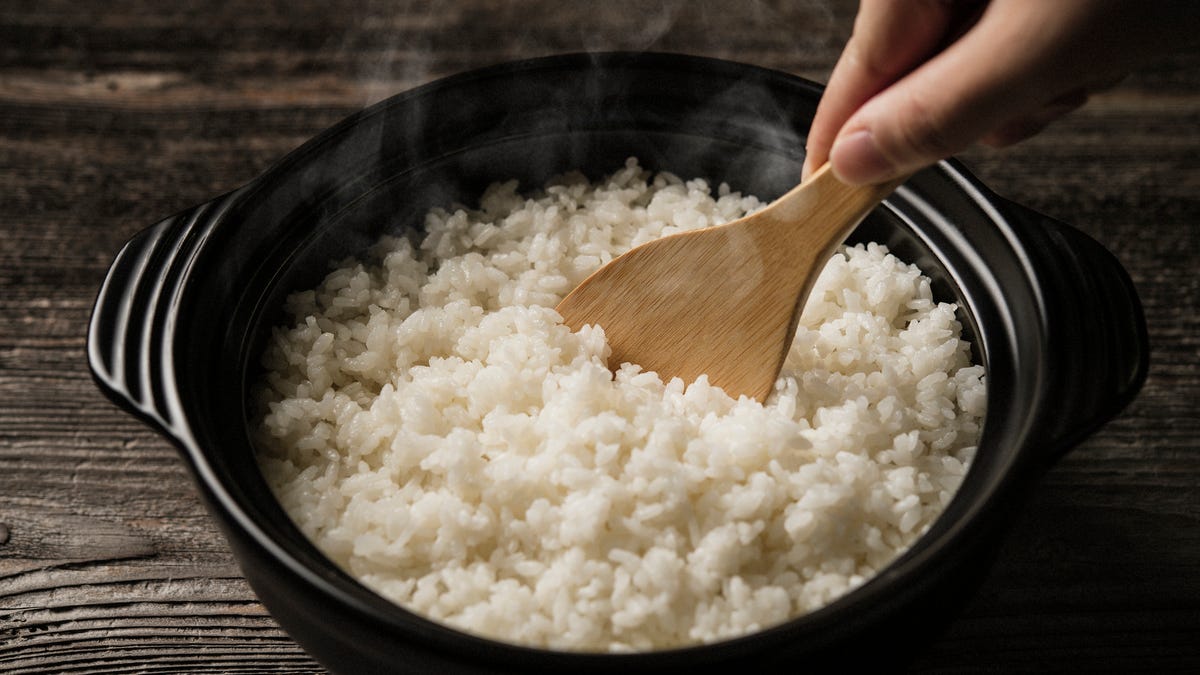
It can be frustrating to have to cook dinner night after night. You can take some of the monotony out of it by meal prepping at the beginning of the week so dinner is ready whenever you want it. That means you can cook things like chicken breast, vegetables, and other sides ahead of the week, including pasta. But if you’re a big rice fan, you might want to think twice before reheating any leftovers.
There’s a small but very real chance that eating that leftover rice or pasta could give you food poisoning. The effects are sometimes referred to as “fried rice syndrome,” since fried rice is typically made with leftover rice. Not only can old rice make your stomach miserable, you might even end up in the emergency room.
Here’s why you may want to avoid preparing a large serving of rice for the week ahead, and how you can properly store and prepare rice to prevent possible food poisoning.
For more health tips, check out 12 probiotic foods that will make your stomach happy and learn why the “rizempic” trend could be dangerous.
Why does leftover rice have a risk of food poisoning?
All varieties of uncooked rice can contain spores of Bacillus cereus, a bacterium that can cause gastrointestinal illness like vomiting or diarrhea. The spores are heat-resistant and don’t die when cooked. As the rice cools and enters the food danger zone of between 40 and 140 degrees Fahrenheit, the bacteria begins to quickly reproduce. There are about 63,400 cases of food poisoning from Bacillus cereus every year in the US, according to the Cleveland Clinic.
The big risk for food poisoning arises when rice is sitting out for more than an hour — that’s when the spores of bacteria can multiply greatly. The bacteria isn’t a problem if you eat the rice right away. Illness is much more common from eating rice that has sat out at room temperature for a few hours, gets refrigerated and is then eaten a few days later. If your rice sits out for two hours at room temperature or one hour at 90 degrees Fahrenheit, it should be thrown away, according to Food Network.
What’s the best way to store rice to avoid food poisoning?
To prevent food poisoning, you should put your leftover rice in the refrigerator soon after you’re done cooking it — the UK’s National Health Service recommends storing it “ideally within one hour” — and limit the amount of time your leftover rice is in the refrigerator.
However, you want to be careful to not put a hot container of food in the refrigerator, because that can increase the temperature of other foods and possibly lead to bacterial growth there as well. Food Network recommends portioning the large batch of rice into smaller containers and cooling the rice to room temperature (around 70 degrees).
The NHS recommends keeping your rice in the fridge for no more than one day until reheating, while the US Department of Agriculture’s FoodKeeper app says you can store cooked rice for four to six days. Food Network says you can continue reheating the rice throughout the three to four days that it has been stored, while the NHS recommends not reheating more than once.
What is the safest way to reheat leftover rice?
If you are planning on reheating your rice, ensure that the rice comes out of the microwave or off the stove top steaming hot with an internal temperature of 165 Fahrenheit or higher. And the next time you’re craving rice, limit the amount you make to what you and your dinner companions plan on eating that day. This also helps to prevent food waste, alongside the benefits of avoiding food poisoning.
